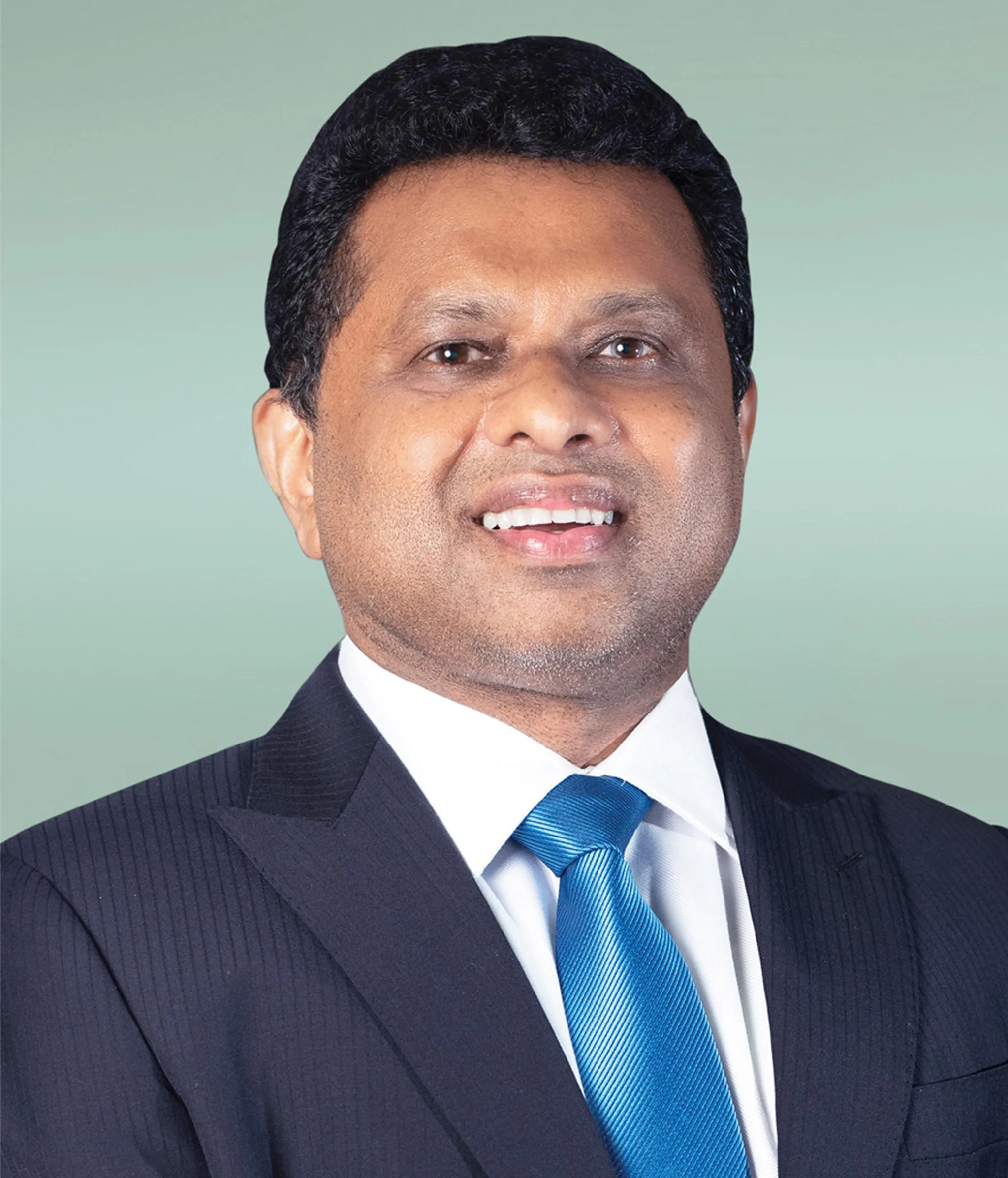

Jayantha S B Rangamuwa, Chairman, Pan Asia Bank. Nimal Tillekeratne, MD/CEO, Pan Asia Bank.
Pan Asia Banking Corporation reported a remarkable performance for the year 2021 to report a Pre-Tax Profit of 4,034 million rupees and a Post-Tax Profit of 3,075 million rupees with growth rates of 42 percent and 50 percent, respectively, while demonstrating resilience amidst challenging macroeconomic conditions.
Against the backdrop of the COVID-19 impact on the Sri Lankan economy, the Bank’s Operating Profit before VAT on Financial Services reached 4,911 million rupees with an increase of 39 percent. This reflects the excellence in core banking performance and the success of cost containment measures evidenced by improvement in all vital profitability matrices, which now rank among industry bests. Even after setting aside sizable provision buffers for the probable deterioration in credit quality due to the COVID-19 pandemic, this feat was achieved. The Bank increased its provision buffers for loan losses during the year, sensibly considering increased risks and uncertainties due to the COVID-19 pandemic through management overlays.
The management increased the impairment provisions made on foreign currency exposures to the Government of Sri Lanka significantly by 719 million rupees, taking into consideration the elevation of default risk associated with the Sri Lankan sovereign due to downgrading the sovereign credit rating of Sri Lanka by international credit rating agencies. As a result of the above factors, the total impairment charge for 2021 witnessed an increase of 49 percent.Interest income accounted for 89.08 percent of the Bank’s gross revenue in 2021, despite interest income declining to 18.80 billion rupees in 2021. The re-pricing effect of lending book responding to market conditions, and the continuation of regulatory directives on interest rate caps for certain lending products introduced during mid-2020, granting of new credit facilities, and the making of new investments at interest rates lower than in the previous year hindered the interest income on loans and advances and other interest-earning assets during the year under consideration. This led to a reduction in the average interest yield by over 200 bps. Remarkable credit growth was achieved in all three segments, namely, Retail, Corporate, and SMEs, of 20 billion rupees (approx.), which offset the pressure on interest income to a greater extent.
Meanwhile, under the prevailing low-interest cost regime, the Bank managed to reduce the interest expenses by 20.04 percent to 9.16 billion rupees in 2021, faster than the drop-in yields on interest-earning assets. Funding the lending book mainly from short-term deposits and liabilities, increase in CASA base to 29.94 percent in 2021 from 25.16 percent in 2020, and monetary policy decisions taken by the Central Bank of Sri Lanka since the emergence of the COVID-19 have resulted in the interest cost of deposits and other interest-bearing liabilities, continuously declining despite the increase in liability base. Accordingly, the Bank’s funding cost, which was above the industry average at the beginning of the year, improved substantially during 2021 and is well-anchored to compete with peer banks by offering lending products at competitive rates. Consequently, the Bank’s Net Interest Income grew by a remarkable 30.83 percent to 9.64 billion rupees in 2021 from 7.37 billion rupees in 2020.
The Bank’s Net Fee and Commission Income recorded a growth of 40 percent with the rebound in demand for credit due to revival of economic activities during 2021 with the accelerated island-wide vaccination rollout by the government, amidst the low-interest rate regime, despite the adverse impact of lockdowns had, and waiver of fees and charges mandated by the industry regulator. Meanwhile, the volatility in foreign exchange rates enabled the Bank to substantially increase its Foreign Exchange Revaluation Gains, as reflected in the Other Operating Income increase of 66 percent in 2021 compared to the previous year. On the other hand, the currency as mentioned above volatility had a negative impact on the Bank’s Net Trading Income due to mark-to-market losses on forward foreign exchange contracts, and currency swap agreements arose from high discounts with the interest rate differential and drop in trade volumes by inactive Forex markets with lack of foreign currency availability. As a result, Net Gains from Trading witnessed a dip of 81 percent in 2021 to 92.26 million rupees from 478.88 million rupees reported in 2020.The Bank strived for earnings maximization through portfolio re-alignment and cost management despite sector vulnerabilities that prevailed last year. The Bank’s Cost-to-Income Ratio improved from 45.25 percent to 38.85 percent during the year under review owing to the excellence in core banking performance, which is reflected in considerable growth in key revenue lines and various strategies and measures taken to contain the increase in overhead costs. The Bank managed to contain the increase in Other Operating Expenses at three percent in 2021.
The Bank’s Profit after Tax gained to an extent due to applying a lower Corporate Income Tax Rate of 24 percent for tax provisioning following the Inland Revenue (Amendment) Act passed in Parliament on May 4, 2021, and certified by the Hon. Speaker on May 13, 2021, which had impacted provisions to compute tax liabilities retrospectively from the taxable year 2020/21. The related adjustments positively impacted the Bank’s bottom line by 90 million rupees on net basis.
The Bank continues to report solid key profitability indicators that rank among the industry’s highest. The Bank’s Pre-Tax Return on Assets also improved to 2.17 percent in 2021 from 1.70 percent in 2020. Further, the Bank reported a stunning Return on Equity of 18.03 percent during the year under review, which stands among the industry best. The Bank’s Earnings per Share (EPS) for the year rose to 6.95 rupees from 4.63 rupees driven by the excellent overall performance. Meanwhile, the Bank’s Net Asset Value per Share appreciated by 20 percent during the year, reaching 41.92 as of December 31, 2021.
The Bank’s Total Assets base stood at 189.51 billion rupees as of December 31, 2021 after posting a growth of seven percent (approx.) during the year supported by the expansion in the loan book. The Bank’s Gross Loans and Advances book recorded an increase of 15 percent (approx.) to reach 150.68 billion rupees due to overall excellence in Corporate, Retail, and SME segments.
The Customer Deposits recorded four percent growth to reach 146.43 billion rupees as of December 31, 2021. Supported by contributions from Corporate, Retail, and SME segments, the Bank attracted more low-cost Current and Savings (CASA) Deposits. Almost all the deposits it raised during the year were low-cost. The Bank’s CASA ratio improved by 478 bps to reach 29.94 percent at the end of 2021 from 25.16 percent by the end of 2020, which is one of the reasons for the reduction in the financial cost of funds in 2021.
The Bank’s regulatory Gross Non-Performing Loan Ratio improved from 6.73 percent to 6.48 percent during the year due to improvement in underwriting standards of the Bank amidst tough macroeconomic conditions. The Bank’s Net Non-Performing Loan Ratio also improved from 2.34 percent to 0.18 percent due to prudent provisioning for possible credit losses.
Nimal Tillekeratne, MD/CEO, Pan Asia Bank, said, “We are extremely proud and pleased to deliver such an excellent performance under the challenging conditions created by the COVID-19 pandemic. This performance has been hard-won because of a proactive approach to business while prudently leveraging emerging opportunities in the market. Despite the losses due to extension of debt moratoriums and prudential risk-based impairment provisioning, the Bank has successfully recorded profitability while consolidating customer and investor confidence.”





